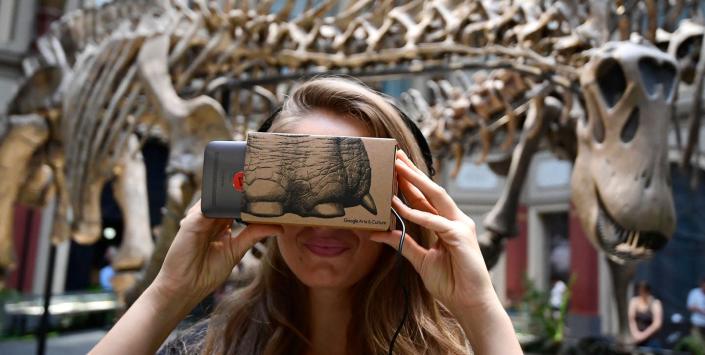
“Hearst Magazines and Yahoo may earn commission or revenue on some items through the links below.”
We live in an unpredictable universe, and making sense of it all can be exhausting. Luckily, our phones are packed with helpful tools that can help us understand our ever-changing world.
There’s no question our phones are powerful. (An iPhone 5 with 16 gigabytes of memory has 240,000 times more memory than the Voyager 1 spacecraft. Imagine! An iPhone 5!) But would you be surprised to find out your phone can help track earthquakes, scout out the universe for extraterrestrials, and help you pinpoint exactly which bird is chirping so early in the morning?
🧬 Science is on our side. We’ll help you make sense of it all.
A couple of these apps are only available on desktop computers at the moment, but they are awesome enough to include in this list. So here are nine of our favorite science apps (and a few bonus ones) that are guaranteed to help you make the most of your time on this pale blue dot.
1. Flyover Country
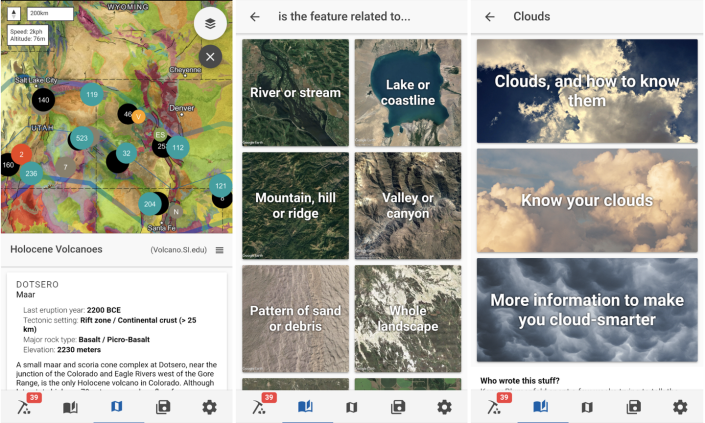
Ever been on a long flight and wondered what on Earth that thing on the ground 40,000 feet below you was? Flyover Country is the app for you.
It’s super intuitive, and allows you to plot your route and save it offline, so you don’t have to spend money on WiFi during the flight. (Depending on how long your path is, the guide can take up to 30 minutes to download, so make sure you do this before the inflight safety demonstration.)
Along your route you can explore volcanoes below you, read up on geologic events that have happened along your path, and learn cool facts about fossils on the ground. The app also includes a cloud visual guide that helps you spot your favorite puffballs—hello, cumulus mediocris—with images taken both inflight and from the ground, as well as a landscape guide with satellite images of everything from ski slopes to impact craters. It’s the perfect distraction for a long flight.
2. BirdCast
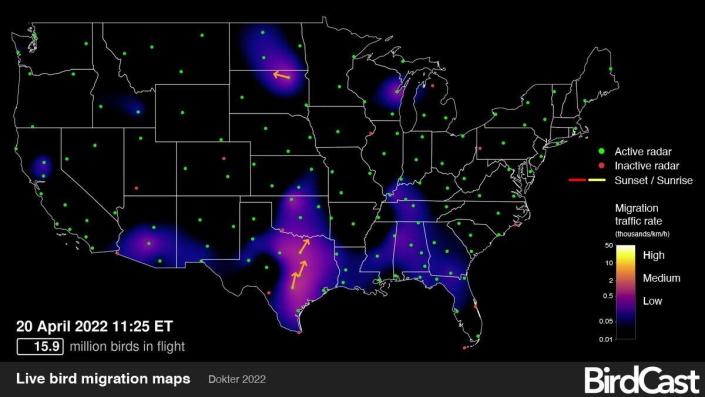
On the other hand, if you want to know what’s high in the skies above you, you can always consult BirdCast. This website tells you which birds are migrating at any given time. You can find out what species were making a racket at dawn yesterday, for instance, or check out the Migration Dashboard near the top of the homepage to explore nightly migration data by your county or state. Or, you can sign up for local migration alerts.
The app mines data from weather surveillance radar to maintain accurate records and forecasts of bird movement.
Learn more than you ever thought you needed to know about bird migration: where birds in the Continental U.S. are headed; when they’ll get there; and what species you can expect to see in your area in the next few weeks and months. The program’s loftier goal is to hone accurate migration models. These models help scientists understand migration behavior; how birds may modify their migration timing and routes in response to climate change; and whether a species’ population size is linked to migration behavior.
BirdCast is a collaboration among interdisciplinary researchers, including Cornell University’s Lab of Ornithology, Colorado State University, and the University of Massachusetts Amherst.
3. Rockd

Rockd is a great geology app that gives you detailed information about the fascinating geologic features in your region.
Which types of fossils are near you? Are there cool minerals in the area? What geologic rock formation is your home or work located on? (Here in rural Pennsylvania, for example, Popular Mechanics lies atop the Epler Formation, which dates as far back as 485.4 million years to the Ordovician period, when marine invertebrates like trilobites swam the seas.)
Find a weird-looking rock? Log in and record observations as you encounter cool features throughout the world. The app also recommends trips you can take and notable geologic attractions in your area; shows you observations that others have made; and reveals what your location looked like throughout geologic history. And there’s even a built-in Brunton Compass, a tool geologists use to measure the direction of a rock layer and the angle at which it slopes into the earth.
The app itself is super easy to navigate, and there’s an in-app guide that helps explain how to get the most out of it.
4. iNaturalist
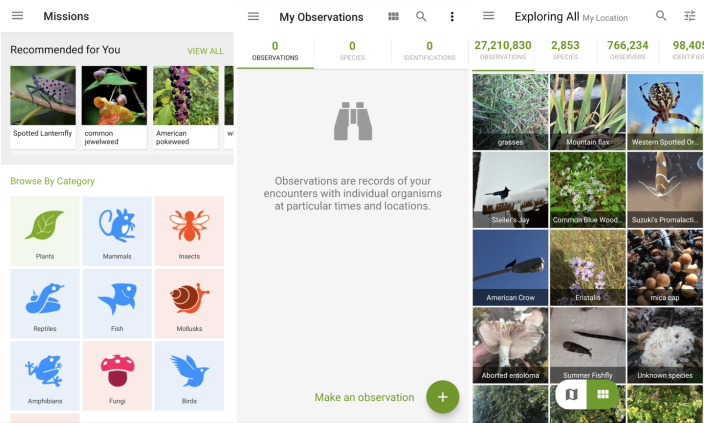
Funded by a partnership between National Geographic and the California Academy of Sciences (Full disclosure: this writer used to work there), iNaturalist allows you to snap pictures of plants and animals and post it to your profile. Other users, be they scientists or science enthusiasts, are then able to help identify the organism in your picture. You can see other observations in your area and learn more about your local ecosystem. (If you’re lucky, you could even end up discovering a new species.)
Identifying weird bugs in your yard is cool. Even cooler? You can participate in citizen science projects that help researchers do everything from track cougar sightings to spot nudibranchs. And, you can sign up to run a Bioblitz event, where you and other nature fans try to identify as many species as you can.
Ever been on a hike and wondered, “What is that?” Now the answers are finally at your fingertips.
5. OneZoom Tree of Life

Ever look at a silverfish scurrying around a dusty corner of your house and wonder, “Why does that thing even exist?” Now you can find out exactly which kinds of creatures that creepy insect evolved from with OneZoom. Here, you can look up any one of 2,235,076 living things and zoom in or out on an interactive family tree to explore the relationship between them. Each leaf on the tree represents a different species, and branches represent lines of evolution. By navigating the branches, you can view the common ancestors of a species, going back billions of years. A single zoomable page contains 105,365 images.
OneZoom is a United Kingdom-based charity that supports conservation and biodiversity. Species sit on a red, green, or gray leaf. Red leaves hold species that are under threat of extinction. Green-leaf species are doing fine, or perhaps “nearly threatened.” However, most species’ leaves are gray because conservationists don’t know how threatened they are.
As for homo sapiens (humans)? They’re on a gray leaf.
6. MyShake
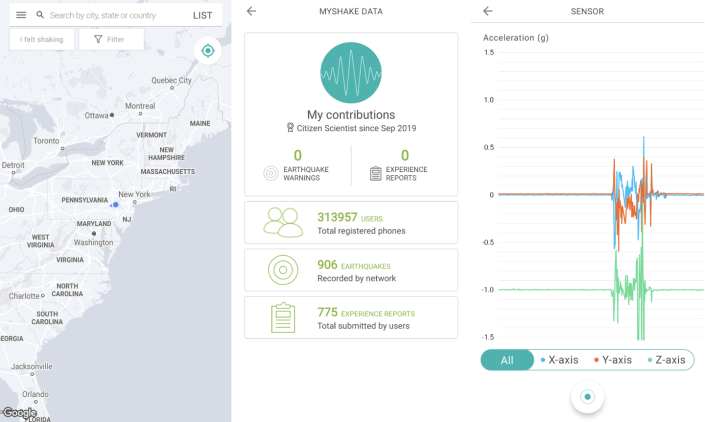
UC Berkeley’s MyShake is an app that harnesses the power of movement sensors in your phone to record small shifts in Earth’s surface. A neural network in the app then uses this data to learn how to better differentiate between earthquake and non-earthquake movement.
Smartphone sensors are incredibly sensitive. Researchers tested MyShake and found that the sensors were able to pick up quakes as gentle as magnitude 5.0 within roughly six miles of the epicenter. So, you know, don’t go for a run while the app is on.
If you feel an earthquake, you’re able to submit an in-app report, which can help scientists learn more about the quake’s duration and intensity. Scientists at MyShake are currently testing an in-app early warning system, which has already rolled out in California, Washington, and Oregon. But the best part is simply watching the sensors do their thing.
7. BOINC

BOINC is another project from UC Berkeley that lets you participate in a number of incredible scientific experiments. The best part is it works while you sleep.
The app lets scientists tap into your phone’s unused computer power to hunt for extraterrestrial life, scan the skies for blinking pulsars, and explore new proteins in three dimensions. Crunching all of that data takes a lot of computer power; when connected to a vast network of other users, your phone helps get the job done. The app currently hosts 31 different projects—there’s something for everyone—and multiple scientific research papers on the results from these projects have been published.
It’s incredibly easy, too. All you need to do is choose a project, register, and you’ll be ready to go. In order for BOINC to work, though, you’ll need a solid WiFi connection and a phone charger.
The caveat: Unfortunately, it’s only available for Android and PC users.
8. Merlin Bird ID
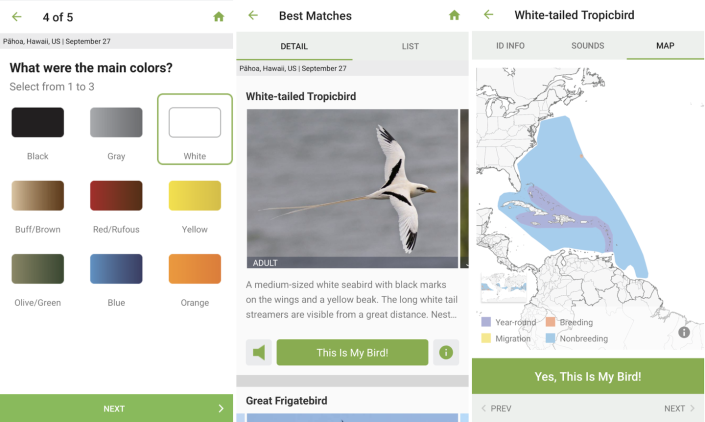
Merlin Bird ID has a super easy user interface, and has to be one of the best apps for beginner birders. Here’s how it works: first, you’ll have to download the appropriate bird guide for your area. Then, once you spot a bird, you’ll be prompted to describe what you saw by filling out an in-app questionnaire. Did it have big talons and a red tail? Was it flitting around in the bushes or swimming in an estuary? The app helps to narrow down a list of birds that you most likely saw. You can also explore the list of birds in your area, listen to their calls, and see their range.
Plus, it also has bird calls. This is important. If you’ve ever been jolted awake by the screech of a barn owl while camping in the woods, you know how unsettling it can be to hear strange, unidentified sounds. And if you’re feeling particularly competitive, you can download the companion app, eBird, and track the birds you spot.
9. Moon Atlas 3D

NASA administrator Jim Bridenstine announced in 2019 that the U.S. plans to send astronauts to the moon by 2024. Just about every major player in the space industry is aiming their sights at the moon, and in particular, the South Pole, where we’ve found evidence of water ice, a necessary resource if we want to build a lunar community.
So now is the perfect time to familiarize yourself with every hill, crater, and crevice on the lunar surface. Moon Atlas 3D lets you zip around our planet’s closest neighbor and explore all of the lunar landing sites (a double-tap takes you to the mission’s Wikipedia page).
The level of detail is pretty incredible, as you can choose a lunar phase and control how many crater labels are shown. (There are a lot of craters.) There’s also a cool “advanced map” that reveals a vintage paper map-style view of the moon. We’re definitely dreaming about colonizing the moon one day. This app will hold us over until that happens.
Bonus Apps:
ISS Detector
This one is fun and simple. It tracks the International Space Station and alerts you when it’ll be flying over your location so you can pop outside and take a look.
Star Walk
Point your phone to the night skies for this one. This app will tell you the names of stars, planets, satellites, and other celestial objects that are in your camera’s view. The information you choose to view is great for beginners, but also satisfies expert star-gazers.
You Might Also Like
